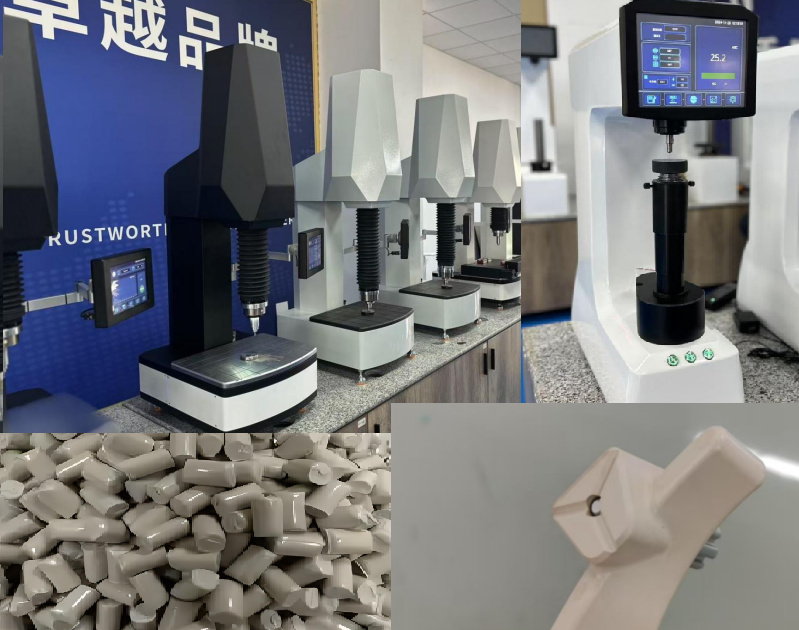PEEK (polyetheretherketone) is a high-performance composite material made by compounding PEEK resin with reinforcing materials such as carbon fiber, glass fiber, and ceramics. PEEK material with higher hardness is more resistant to scratches and abrasion, and is suitable for manufacturing wear-resistant parts and parts requiring high-strength support. The high hardness of PEEK enables it to maintain its shape even after mechanical stress and long-term use, making it widely used in aerospace, automotive, medical and other fields.
For PEEK polymer composite materials, Rockwell hardness is one of the key indicators for evaluating its performance. The testing principle of Rockwell hardness is based on the indentation method, which determines the hardness value of the material by measuring the indentation depth produced by a specific indenter pressing into the material surface under a specified test force. In addition, it is also necessary to test its mechanical properties by testing its tensile strength, bending strength, impact strength, etc., and follow international or national standards such as ISO, ASTM, etc. to conduct standardized tests to ensure the stability of its quality and performance, and to ensure the safety and reliability of its application in related fields.
The Rockwell hardness test results can directly reflect the ability of PEEK polymer composite materials to resist plastic deformation. A higher Rockwell hardness means that the material has stronger scratch and wear resistance, which is crucial for its manufacturing of parts in the aerospace field, ensuring that the parts can work stably and long-term in complex mechanical environments and extreme conditions; when used in the automotive field to manufacture engine parts and transmission system parts, high-hardness PEEK composite materials can effectively improve the service life and reliability of parts; in the medical field, when used to manufacture surgical instruments or implants, the appropriate hardness can not only ensure the operating performance of the instrument, but also meet the good mechanical compatibility between the implant and human tissue. At the same time, the Rockwell hardness test results can also be used as a key basis for quality control, used to monitor the stability of PEEK material performance during the production process, and to promptly discover quality problems caused by changes in raw materials, processing technology and other factors.
When testing the Rockwell hardness of PEEK materials, the indenter type and test force should be reasonably selected according to the characteristics of the material and the possible hardness range. Commonly used scales include HRA, HRB, HRC, HRE, HRR, HRL, HRM, etc.
Before the formal test, make sure that the test surface of the PEEK material is flat, smooth, and free of oil, oxide layer or other impurities to ensure the accuracy of the test results. Place the sample firmly on the workbench of the hardness tester to ensure that the sample does not move during the test. Each time the test is performed, the operating procedures of the hardness tester must be strictly followed, and the test force must be applied slowly to avoid impact loading. After the test force is stabilized for the specified time, read and record the Rockwell hardness value corresponding to the indentation depth. In order to obtain more representative data, multiple measurements are generally performed at different locations, such as selecting 5 or more different test points, and then the measurement results are statistically analyzed to calculate parameters such as the mean value and standard deviation.

Post time: Apr-18-2025







